ROVING REPORTERS
Desert days — how cheetah (and hyena) man Gus Mills knocked the spots off the naysayers
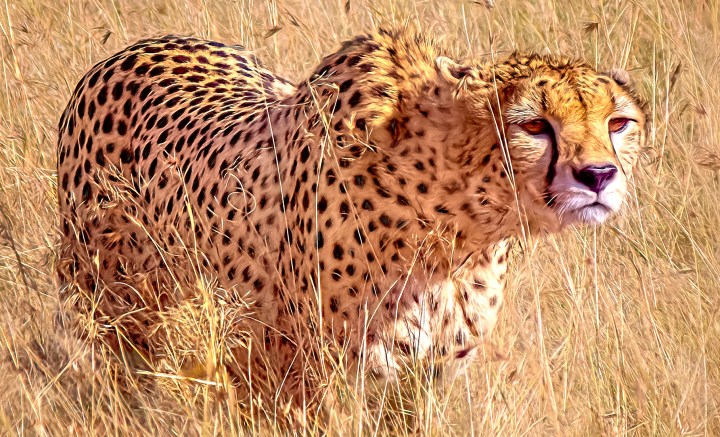
Gus Mills took the path less travelled to a career in the bush, studying wildlife. He talks about his life, his work and the alternatives to managing cheetahs in small, fenced areas.
Being a “very bad student” at school, failing matric and being told he would never be fit to study science did not stand in the way of Dr Gus Mills becoming a world-renowned zoologist and author of several science books on African wildlife.
“Follow your heart, not your head,” says Mills, whose passion for wildlife dates back to his first visit to the Kruger National Park, at the age of eight, in 1954.
“It did something to me,” Mills recalls. “After that, I always knew I wanted to work in the bush.”
Later, after successfully completing what he jokingly refers to as his “MA” (Matric Again), his parents supported his studies in wildlife after a failed attempt at psychology. Nearly everyone else asked him: “What’s the point? You’re not going to make a career of it. There’s no money in it.”
Mills persevered, and while completing his BSc at the University of Cape Town he fell in love with Margaret Davies, who shared his passion for wildlife and the bush. After graduating with honours in Wildlife Management at the University of Pretoria, Mills heard of a brown hyena project in the Kalahari. “I was fortunate enough to get that job. I went to the Kalahari with my new wife of 21 and stayed there for 12 years,” says Mills.
Forty years on, the Mills couple have co-authored Hyena Nights & Kalahari Days, A Natural History Guide to the Arid Kalahari, Kalahari Cheetahs and most recently Fast Cats on Red Sands.
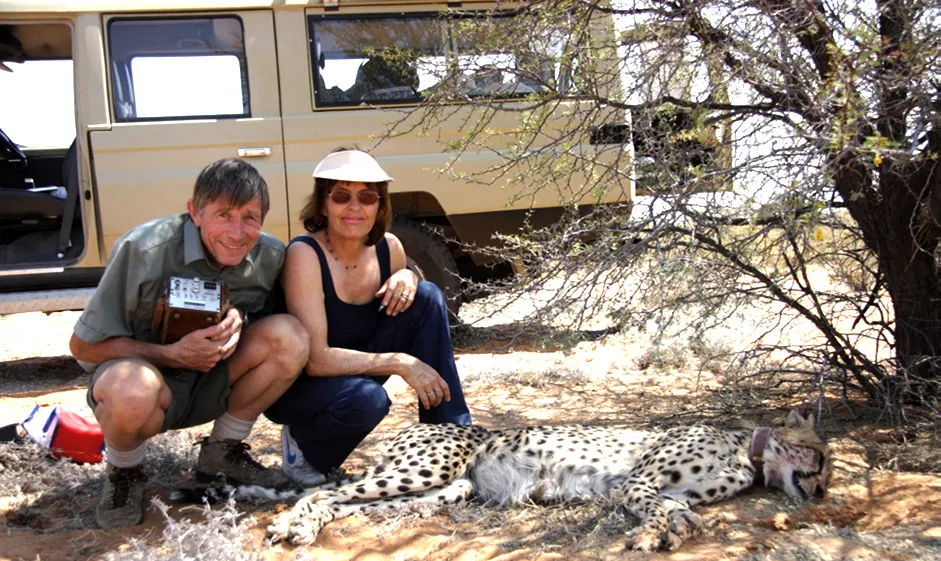
This sedated cheetah, named Lisette, was the first cat that Gus and Margie Mills radio-collared in their Kalahari study. They followed her for more than six years. (Photo: Supplied)
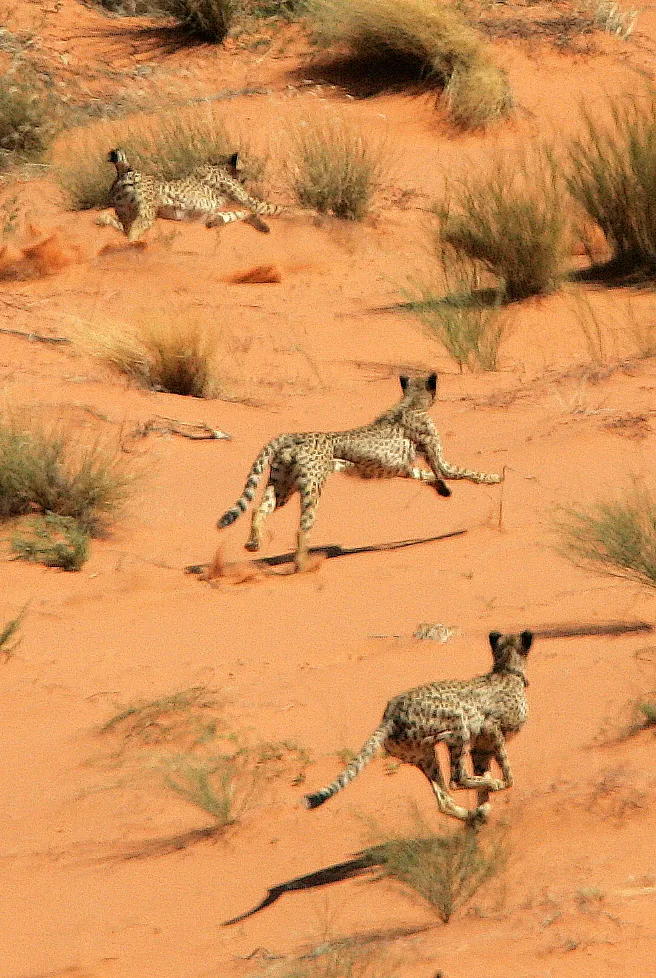
In their latest book, ‘Fast Cats on Red Sands’, the Mills couple delve into the fascinating lives of cheetahs in the Kalahari — a totally different habitat from the one most people associate the cheetah with. (Photo: Gus Mills)
Future scenarios
In early October, Gus Mills will speak at the 12th Oppenheimer Research Conference in Midrand, Johannesburg. He will present findings from his and Margie’s six-year study on cheetahs, in particular their hunting behaviour, prey selection, the role they play in the food chain, and their relations with competitors and each other.
He will also touch on future scenarios for cheetah conservation.
In this regard, “we are a bit obsessed with numbers,” says Mills. “We always want to know how many of a particular animal there are.” What’s more important, he says, is the viability of a population.
“Cheetahs don’t necessarily have to reach, and never do reach, the densities of other large carnivores like spotted hyenas and lions, or even leopards. Cheetahs are a low-density species, a bit like wild dogs. That’s okay, as long as they are viable and able to exist in a natural state.”
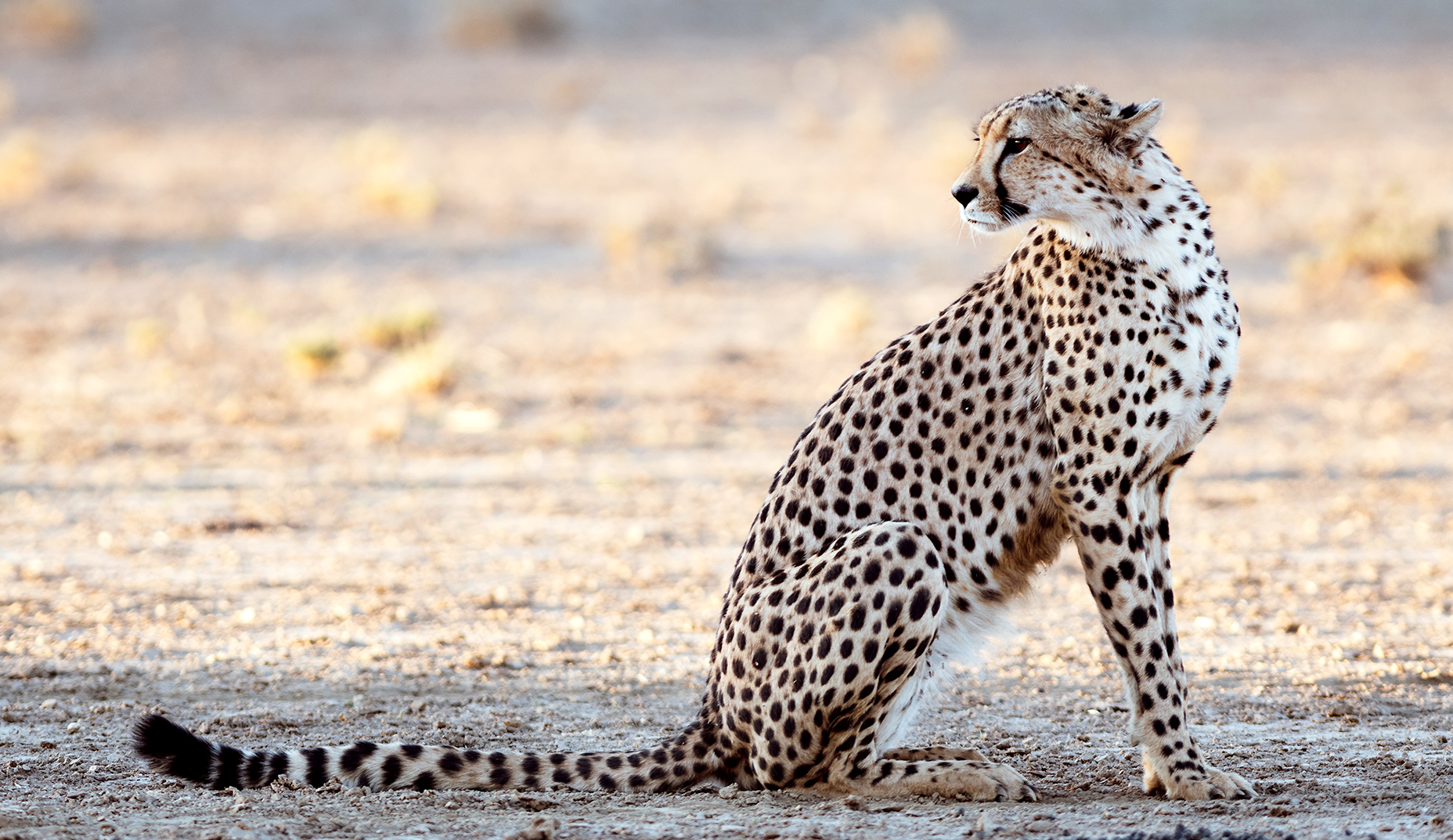
Gus Mills took the path less travelled to a career in the bush, studying wildlife. Above, a Kalahari cheetah. (Photo: Stephanie Klaarman)
Viable landscapes
“We must also understand that quality of ecosystems is much better than quantity. This is what we should strive for.” And species management, he adds, must be incorporated into a much larger ecosystem framework.
That’s a big challenge: easy to talk about, but not always possible to achieve. Mills refers here to a worrying “what is mine, is mine” attitude that makes private reserves reluctant to break down boundary fences and consolidate into bigger or more viable natural landscapes.
Regarding available wild space, Mills believes that the vast plains and wildlife areas around Camdeboo National Park in the Eastern Cape could provide an ideal ecosystem for cheetahs. As a conservation tool, this would certainly be a better option than the current plan to introduce African cheetahs to India.
More than 70 years after the Asiatic cheetah became extinct in India, 20 Southeast African cheetahs were flown in from Namibia and South Africa to India’s Kuno National Park. That was in September last year. Six adults and three newborn cubs have since died, raising doubts that the experiment, permitted by India’s Supreme Court, will succeed.
Compare and contrast
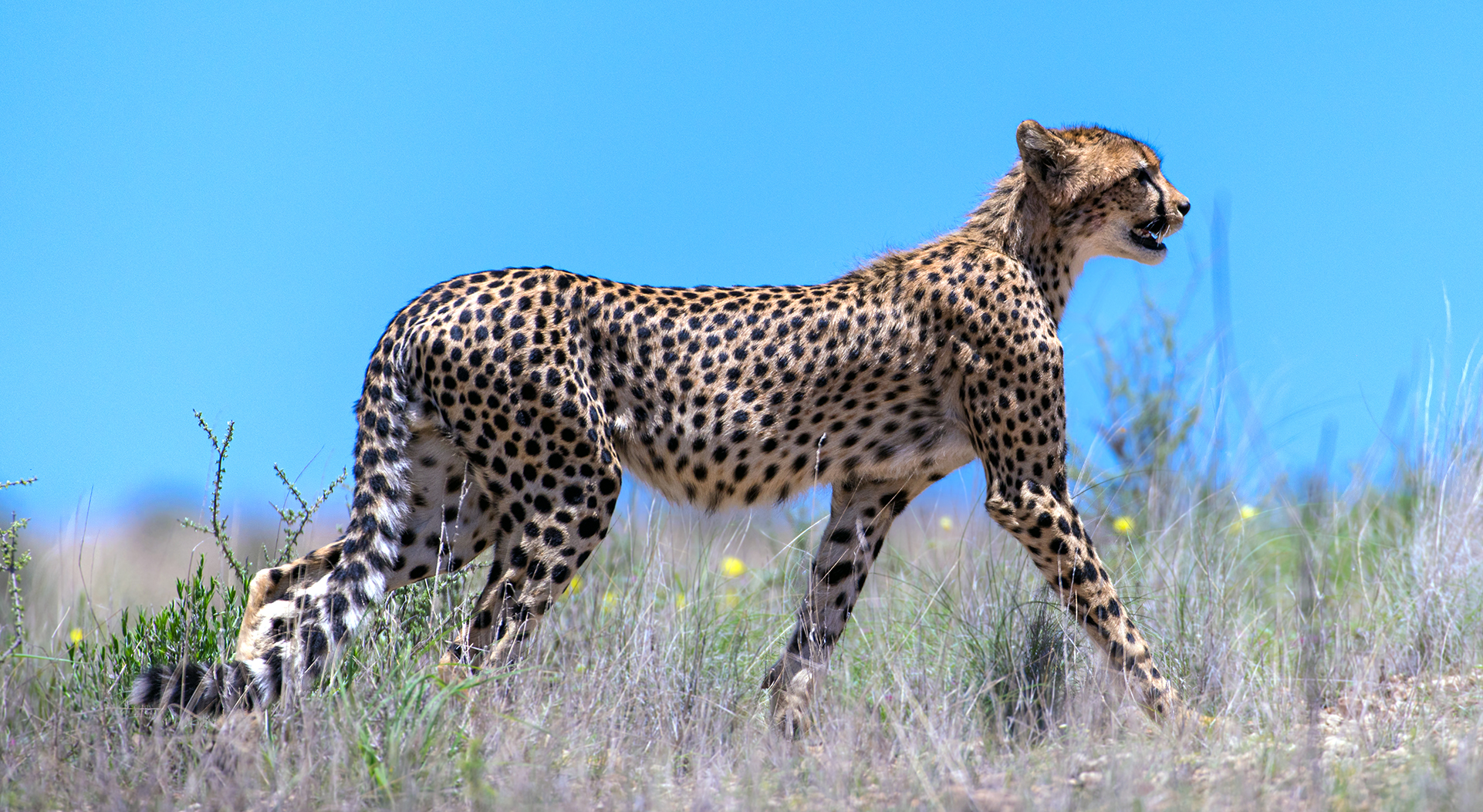
A cheetah at home in the Kalahari. (Photo: Stephanie Klaarman)
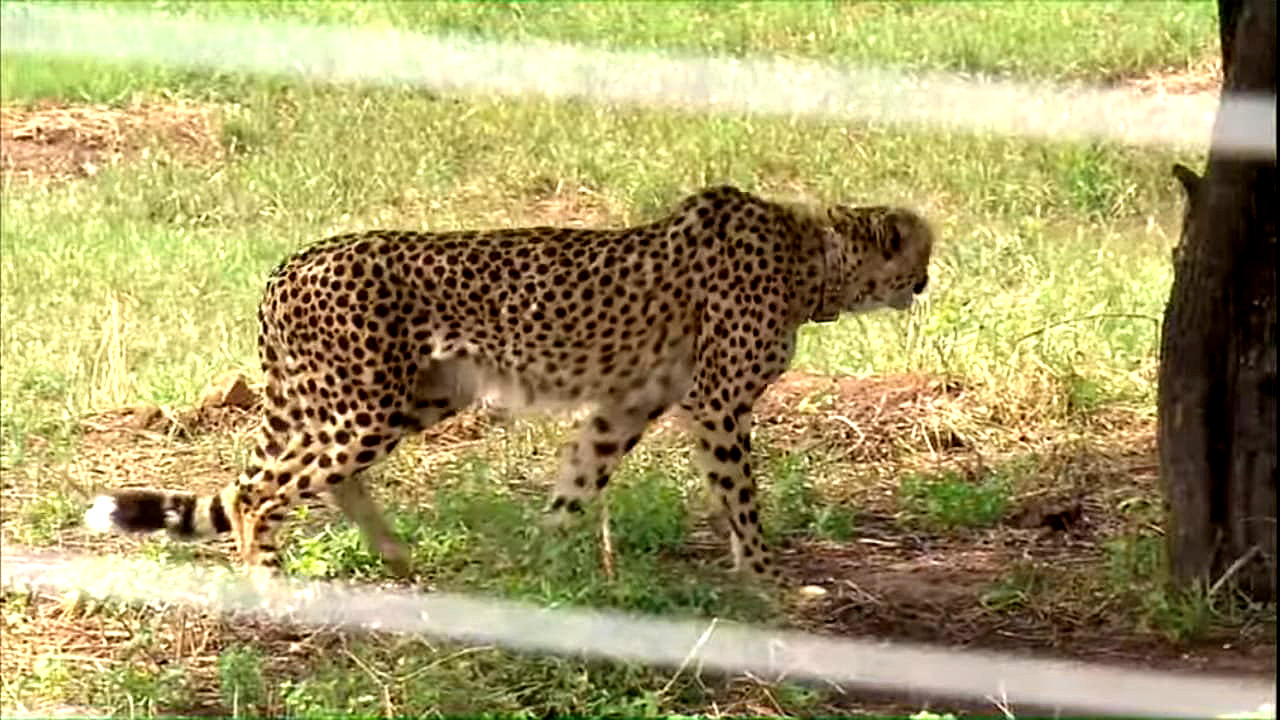
An African cheetah inside the quarantine facility in Kuno National Park in India. (Photo: Courtesy Wikimedia Commons)
Growing concerns
Numerous international experts, including South African scientists, have raised growing concerns about the £4.8-million scheme, says Mills. In this article in The Guardian, some argue that Project Cheetah was set up too hastily with not enough space reserved for the cheetahs.
Several Indian scientists have argued that the project is politically motivated and driven by the Indian government, at the insistence of Prime Minister Narendra Modi.
Mills agrees and is watching with interest a dispute as to whether or not tight tracking collars caused some of the cheetahs to die from septicaemia in the tropical humid climate.
India’s Ministry of Environment, Forest and Climate Change maintains that all the cheetah deaths were due to natural causes and stated that “reports blaming radio collars were speculative and lacking in scientific evidence”.
The Wire, an independent news service in India, has since reported that there has been “a gag order of sorts” on officials and experts involved in the project that prevents them from speaking to the media about the current status of the project and its cheetahs.
Thorny
Mills is clearly not one to shy away from thorny topics, particularly where they concern animals he loves. This would include hyenas.
Brown hyenas were the first animals the Mills studied and then there are spotted hyenas, which he also finds incredibly interesting animals, but very much misunderstood.
“Not so long ago I had a spat with the BBC when they referred to spotted hyenas as ‘ferocious scavengers,’” says Mills. “I took exception and got into some correspondence with them. In the end, they changed the wording to call them ‘formidable hunters’.”
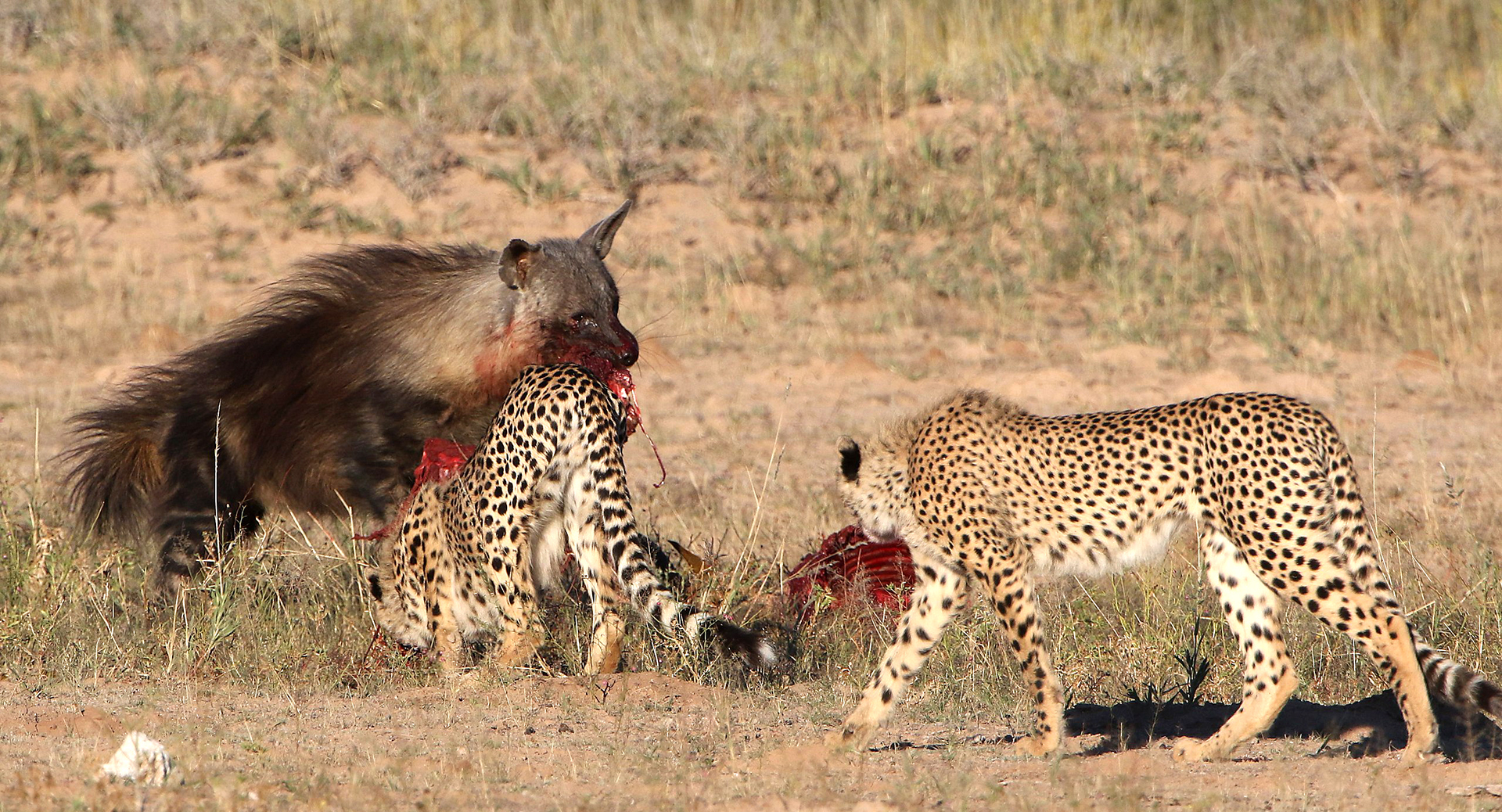
A brown hyena steals a freshly killed springbok from cheetahs in the Kgalagadi Transfrontier Park in the Kalahari. (Photo: Derek Keats / Wikimedia commons)
Nobel laureate
So, who does Mills regard as his role models?
He fondly recalls his time with Hans Kruuk, the first biologist to study spotted hyenas in the Serengeti.
“He was the man who really showed me what formidable hunters spotted hyenas are. When I first started my brown hyena work, I contacted him. He was at Oxford, in England, and was very interested in the work we were doing. He came out to the Kalahari and became my mentor, my co-supervisor. He was a student of Niko Tinbergen — one of the fathers of animal behaviour and one of the very few biologists to get the Nobel Prize.
“Niko really formulated a lot of my thinking and my scientific approach. He certainly had a very big influence on my professional career with Kruuk.”
According to the Royal Society, the Dutch-born Tinbergen “grew from a boy who loved skipping school to be outdoors, into a Nobel Prize-winning founding father of ethology”.
Born in 1907, he was unremarkable at school, doing just enough to pass exams. In an autobiography, Tinbergen writes that he considered school… “rather a nuisance . . . and a frustrating restriction of my freedom. The sheer boredom of having to learn the multiplication tables…”
It’s easy to see why Mills admires Tinbergen and to spot the parallels between their young lives. We are all expected to follow the rules, to do as we are told, but just sometimes, cheetahs prosper. DM
Additional reporting, Fred Kockott. Howard is a zoologist completing her Phd at the University of the Free State. Kockott is the founding director of Roving Reporters.
This story forms part of Roving Reporters Game Changers series. It was produced with support from science communication specialists Jive Media Africa.




















Comments - Please login in order to comment.